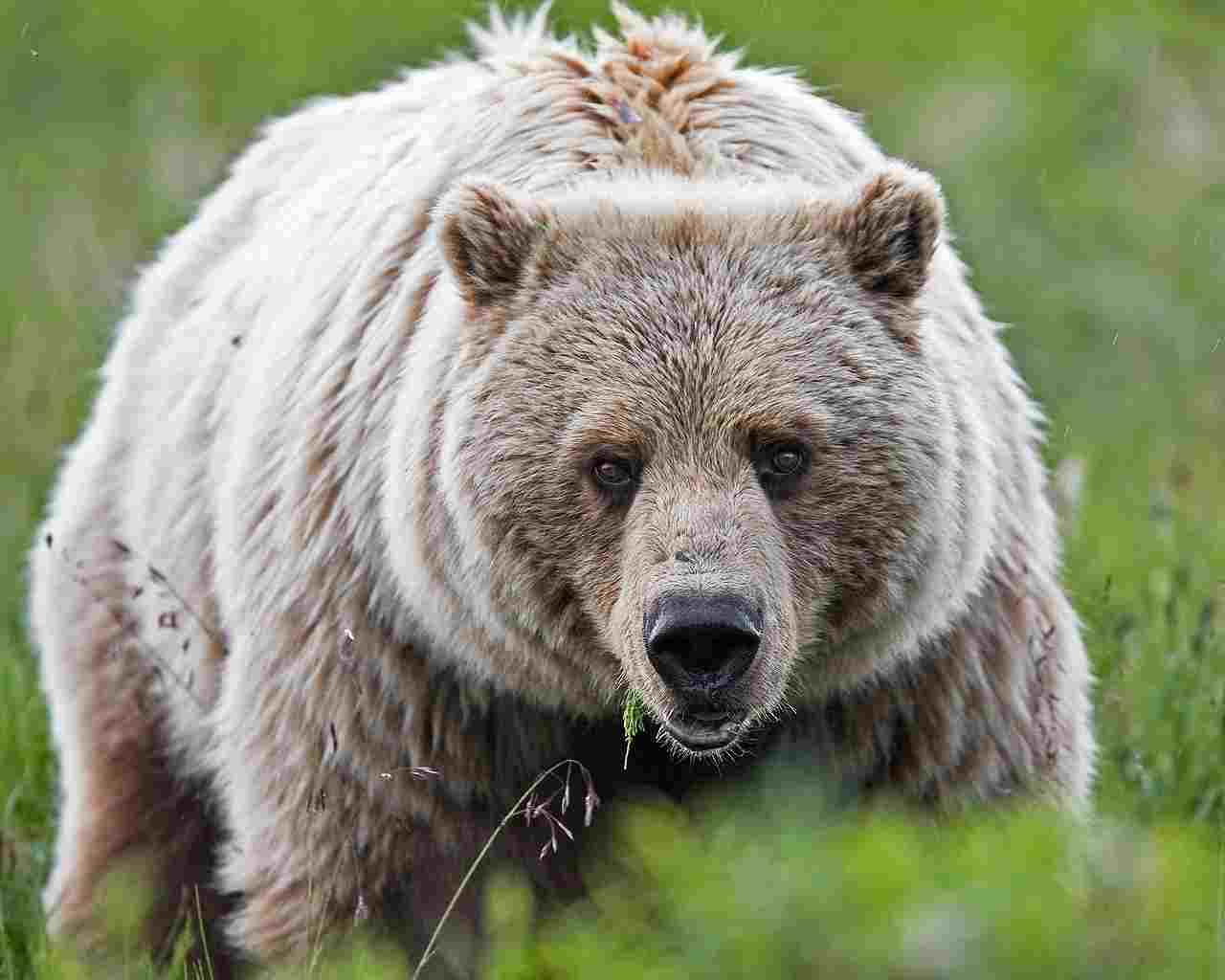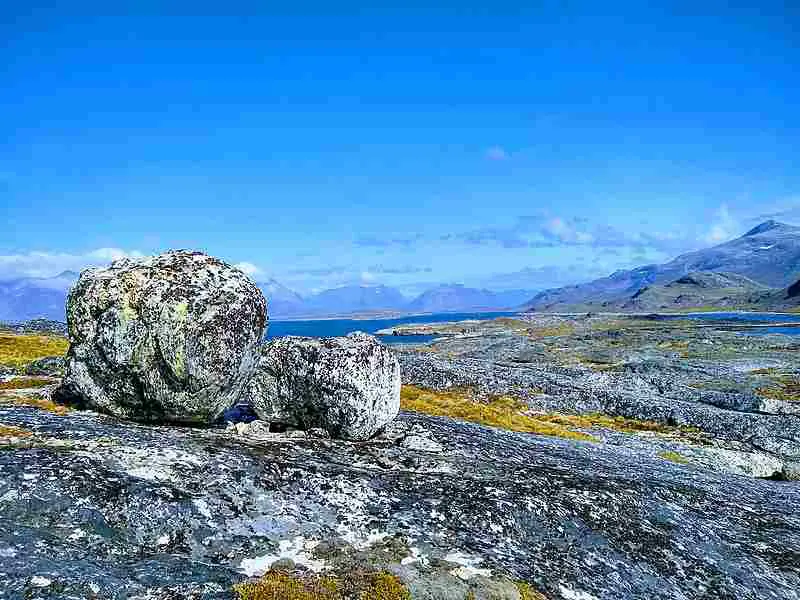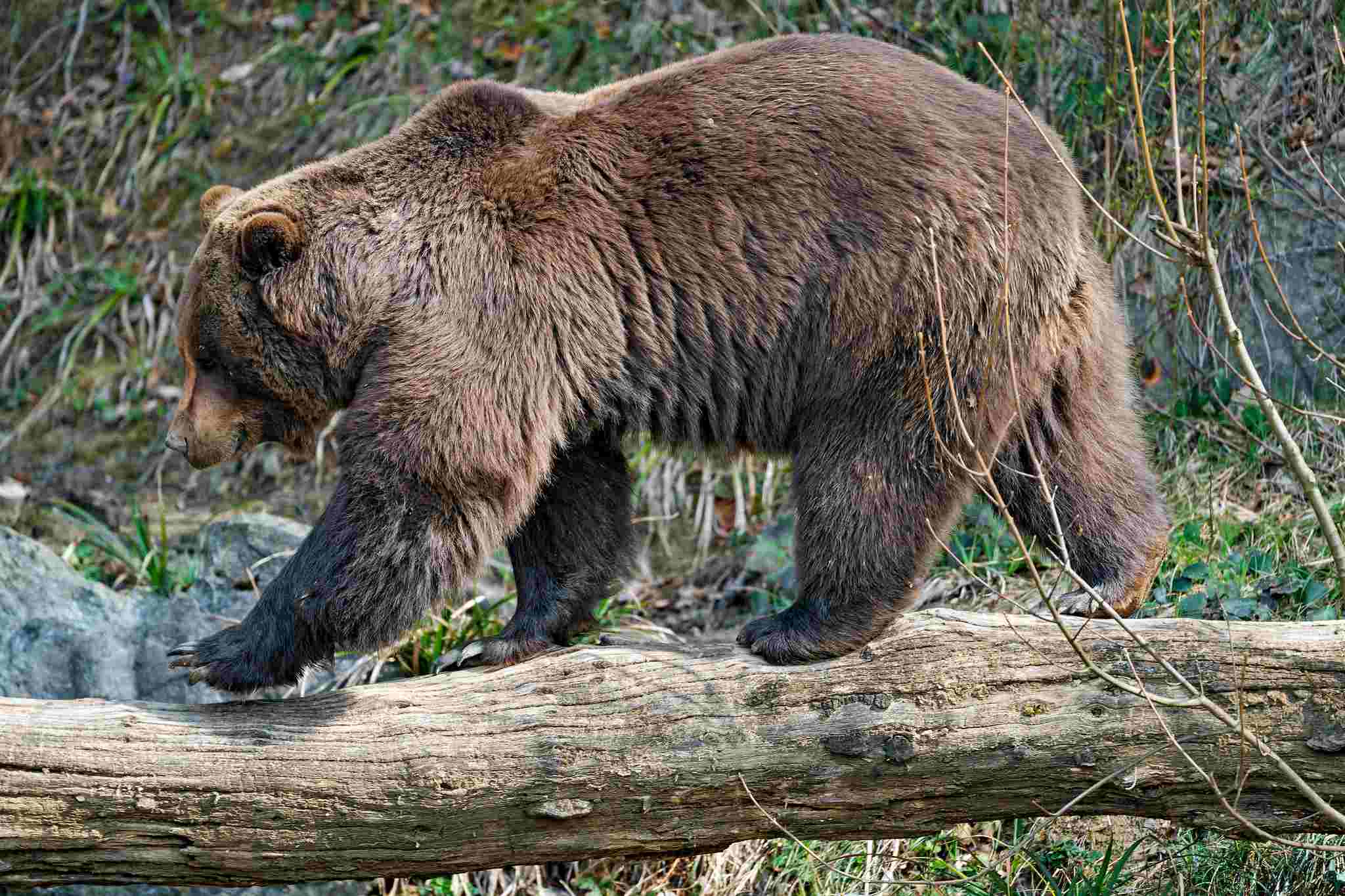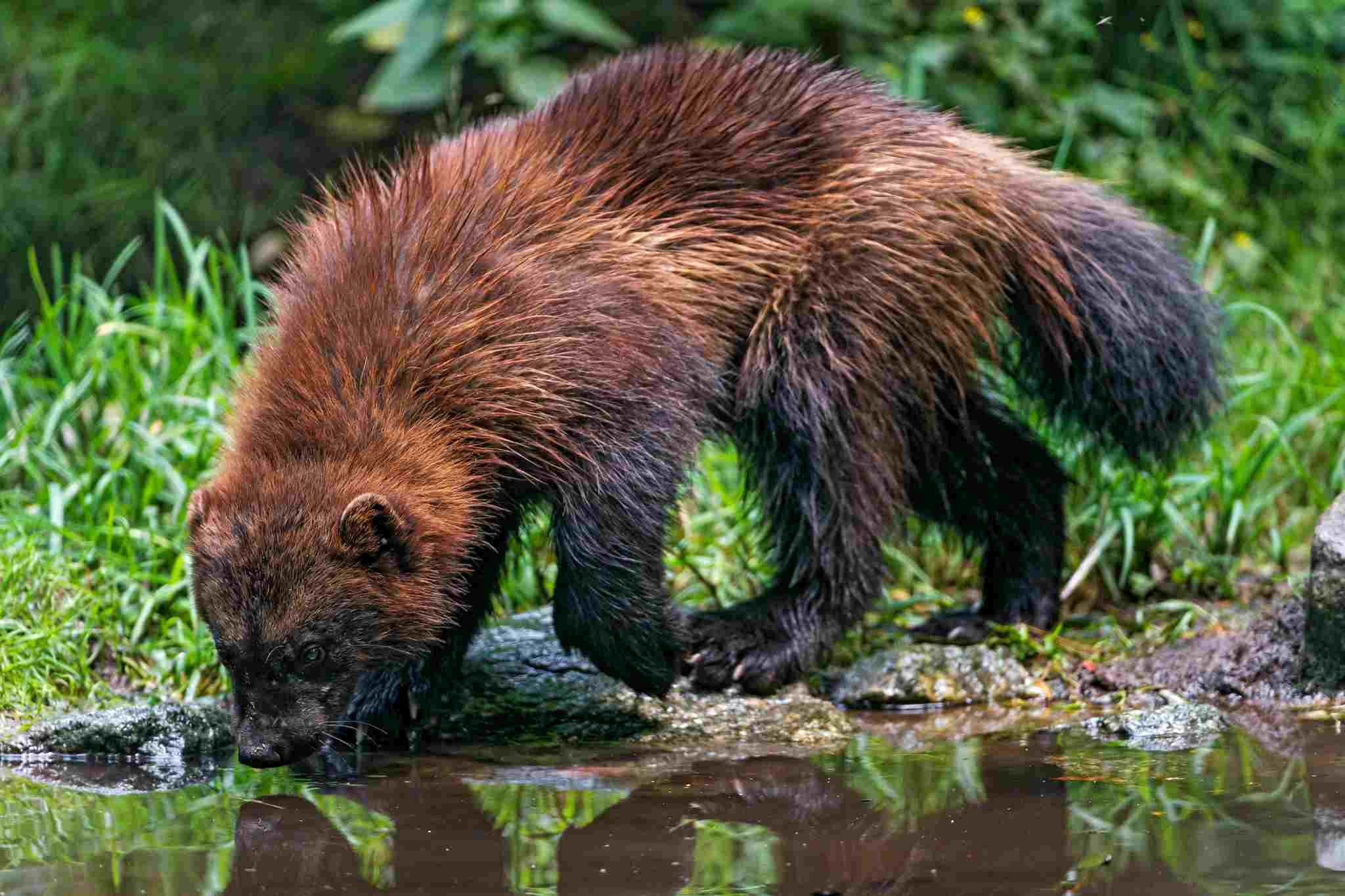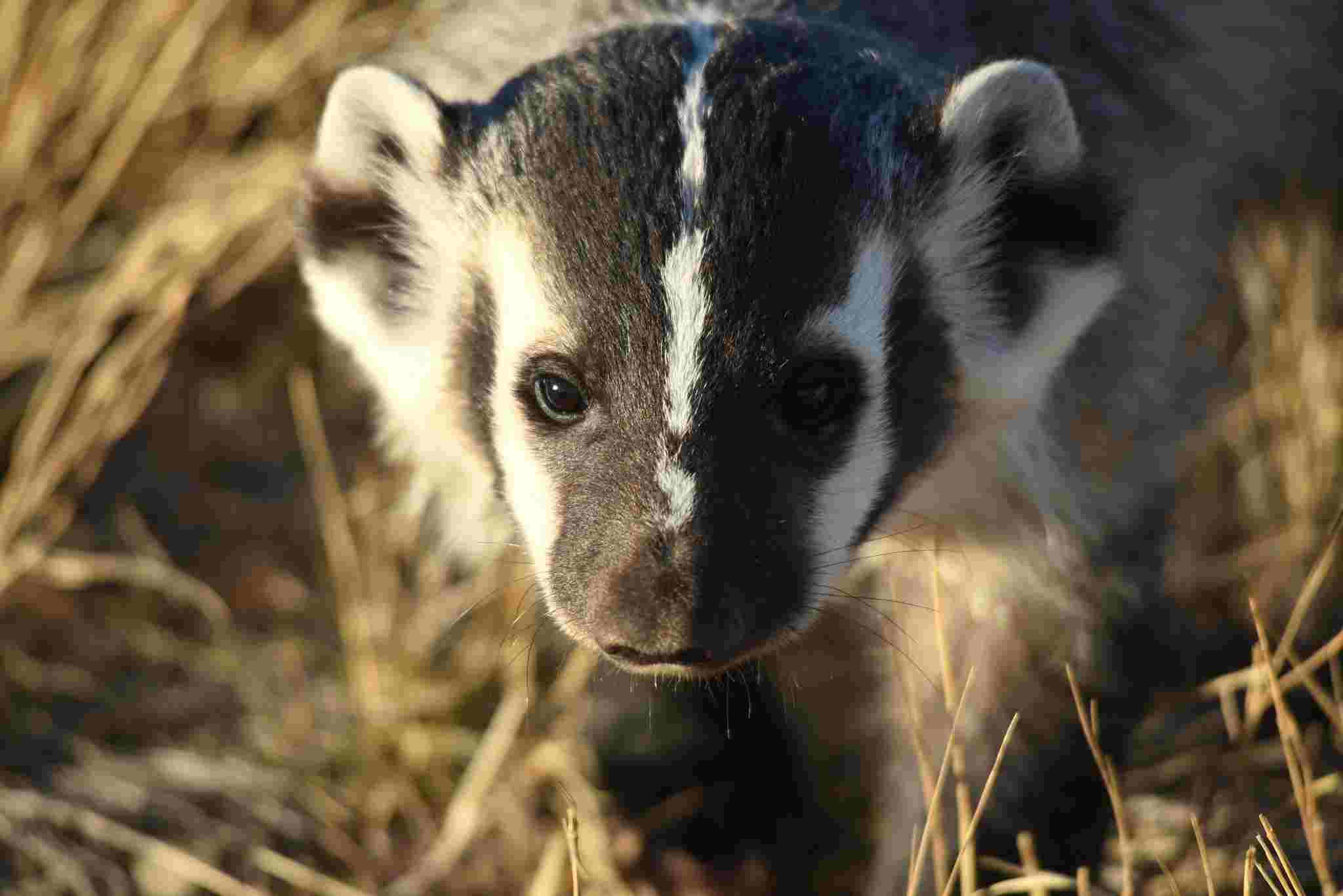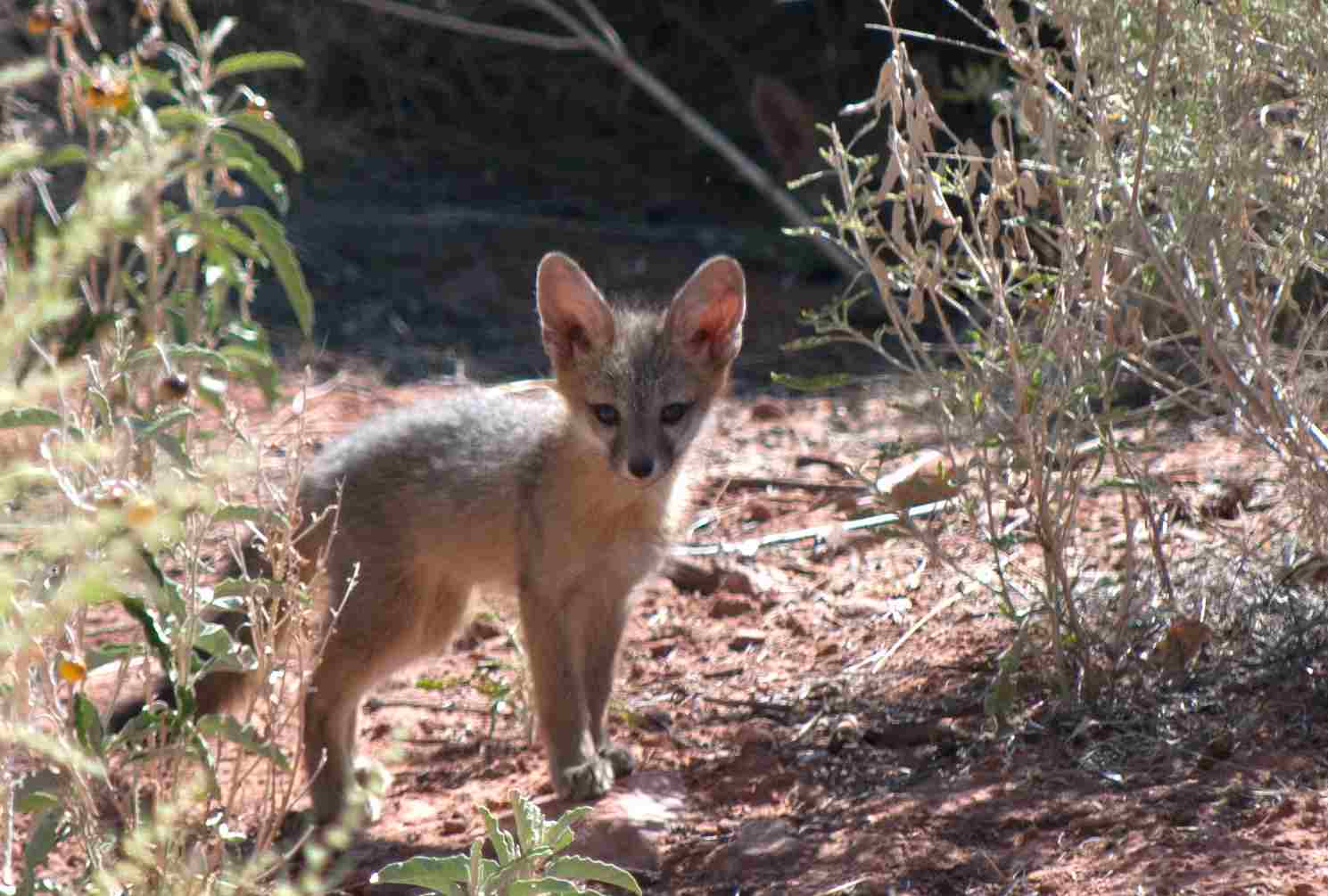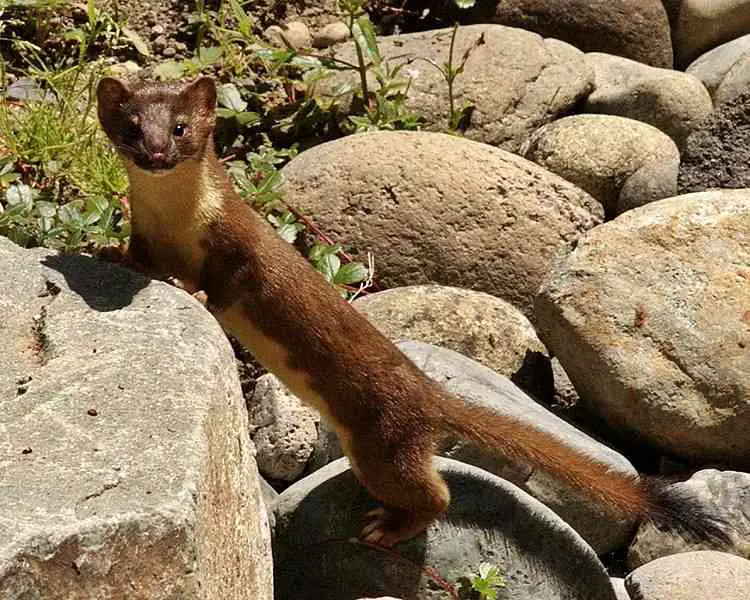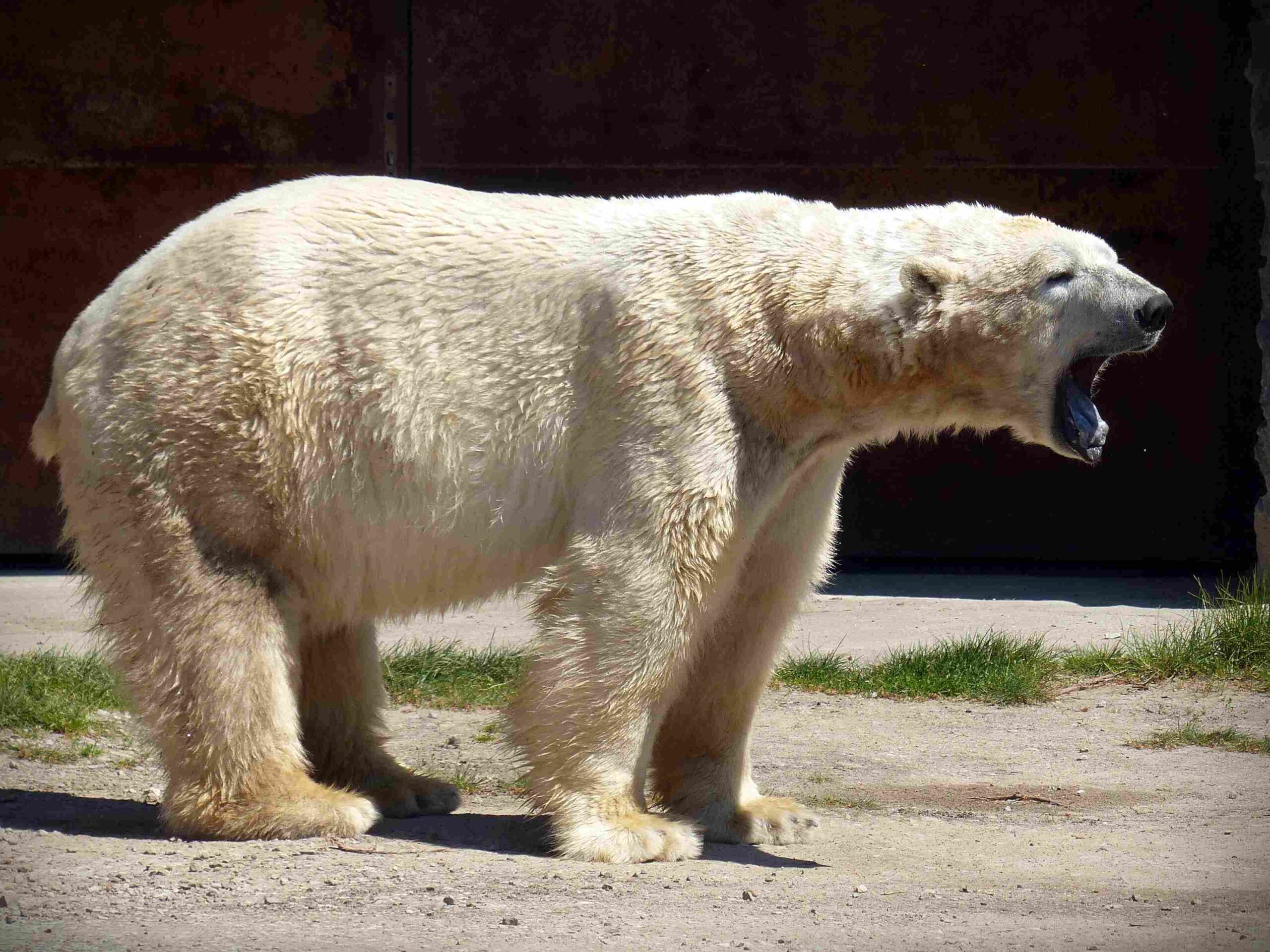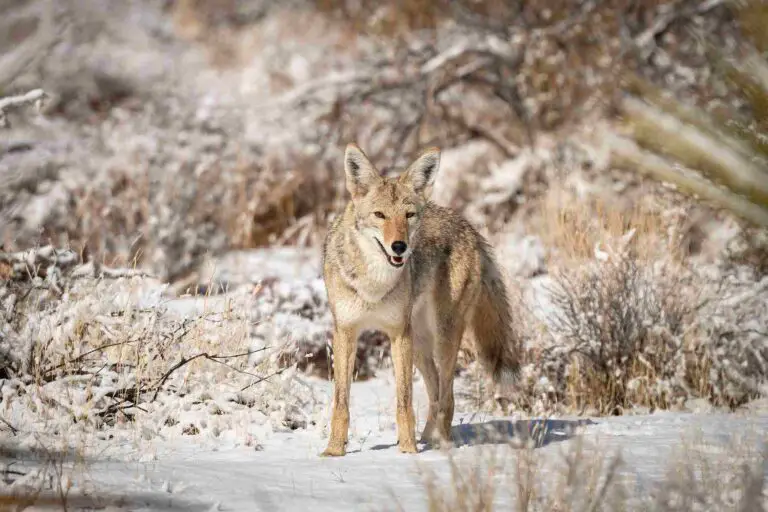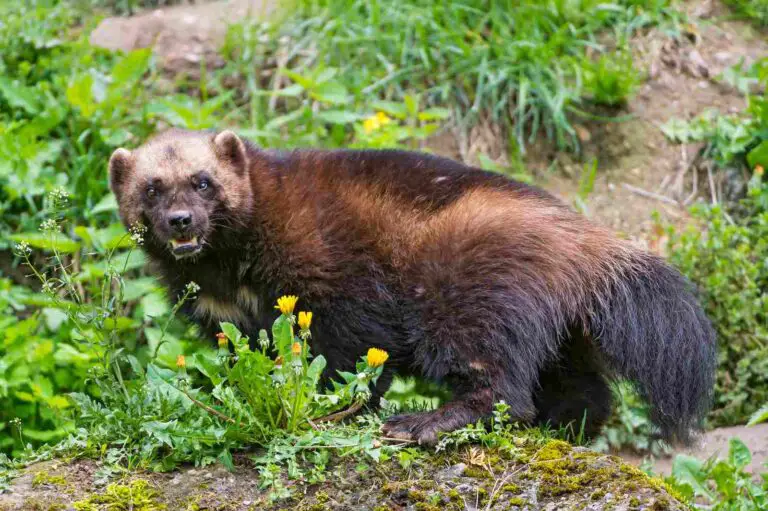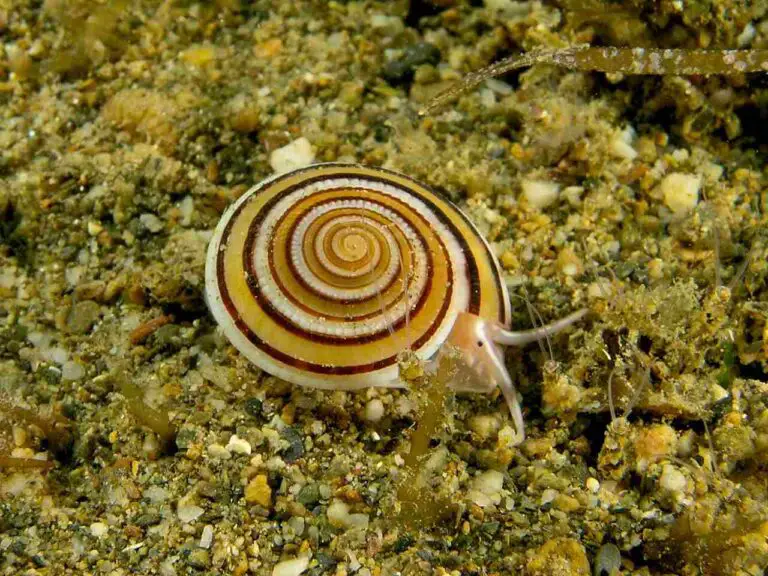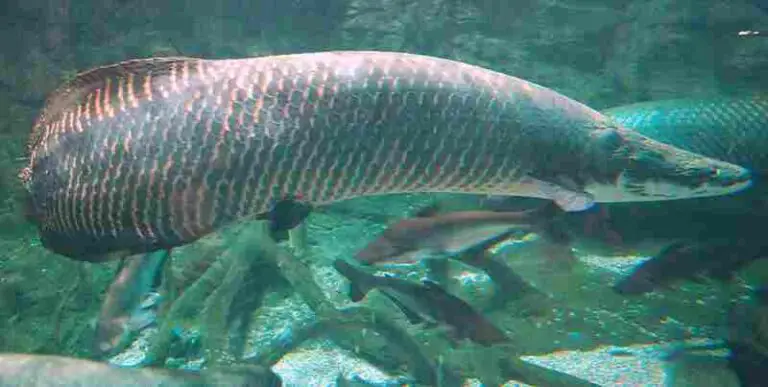11+ Predators In Alaska And Their Characteristics
Examples of predators in Alaska are the wolverine, which has a stocky build and caches food; the arctic fox, known for its coat that changes color with the seasons; and the black bear, a versatile omnivore that is skilled at climbing trees. Other predators include the brown bear, the bald eagle, and the lynx, each with unique adaptations to their environments. Conservation efforts in Alaska focus on addressing threats such as habitat loss and climate change to ensure these predators remain a vital part of the ecosystem.
1. Wolverine
The wolverine (Gulo gulo) is a powerful and ferocious predator found in the remote and rugged landscapes of Alaska. With a stocky build and thick fur, the wolverine is well-adapted to the harsh Arctic environment, where temperatures can drop to extremely low levels. Its physical strength and ferocity are remarkable, often allowing it to scavenge food from larger predators or take down prey that might seem too large for its size. Wolverines are known for their wide-ranging territory, sometimes covering hundreds of square miles in search of food, and they are skilled climbers, swimmers, and runners.
Wolverines are solitary creatures, typically avoiding direct interaction with other predators. Their diet consists of a variety of food sources, including small mammals, birds, eggs, and carrion. They are also known to cache food, burying it in the snow for later consumption during leaner times. These survival skills make the wolverine a formidable predator in the Alaskan wilderness, where food sources can be scarce and competition fierce. Despite their strength and resilience, wolverines face threats from habitat loss and climate change, which can affect their range and food availability.
2. Arctic Fox
The arctic fox (Vulpes lagopus) is a small but resourceful predator commonly found in Alaska’s tundra regions. It has adapted to the extreme cold with a thick coat that changes color with the seasons, providing excellent camouflage against the white winter snow and the brown summer tundra. This adaptive feature helps the arctic fox hunt small prey like lemmings and birds, as well as scavenge from larger predators. The arctic fox is highly opportunistic, capable of covering great distances in search of food, and has been known to follow polar bears to feed on their leftovers.
Arctic foxes are also noted for their complex social structures, often living in family groups and sharing dens. These dens can be extensive, with many entrances and exits, providing protection from predators and harsh weather. The foxes are known to be playful and curious, traits that are often seen in their young pups. However, climate change and human encroachment into their habitats threaten the arctic fox population, as rising temperatures may reduce their snow-covered habitat, and competition from red foxes could increase.
3. Black Bear
The black bear (Ursus americanus) is one of Alaska’s most common bear species, inhabiting a variety of environments from dense forests to coastal areas. With their sleek black fur and moderate size, black bears are versatile omnivores, eating a wide range of food from berries and nuts to small mammals and fish. They are also known to forage in human-populated areas, sometimes leading to conflicts with people. Despite this, black bears are generally more timid and less aggressive than their larger relatives, the brown bears.
Black bears in Alaska are typically solitary, except for mothers with cubs or during the mating season. They have a strong sense of smell, which helps them locate food over long distances. Black bears are also skilled climbers, often escaping danger by scaling trees. In the fall, they prepare for hibernation, accumulating fat reserves to sustain them through the winter months. Conservation efforts have helped stabilize black bear populations, but they continue to face threats from habitat loss and vehicle collisions.
4. Brown Bear
The brown bear (Ursus arctos), commonly known as the grizzly bear, is a formidable predator found throughout Alaska. They are among the largest bear species, with males weighing over 1,000 pounds. Brown bears are known for their incredible strength and adaptability, inhabiting a range of environments from coastal areas to interior forests. They have a diverse diet, feeding on salmon, small mammals, carrion, and a variety of plant material, which allows them to thrive in various conditions.
Brown bears are generally solitary but can be seen in groups where food sources are abundant, such as during salmon spawning season. Their social behavior during these times can be complex, with dominance hierarchies and interactions among bears. Despite their size and strength, brown bears face threats from habitat encroachment and human-wildlife conflicts. Conservation efforts in Alaska focus on maintaining their natural habitats and reducing conflicts with humans to ensure the brown bear population remains stable.
5. Bald Eagle
The bald eagle (Haliaeetus leucocephalus) is a majestic bird of prey and the national symbol of the United States. Found throughout Alaska, especially along coastlines and near large bodies of water, bald eagles are known for their striking white head and tail feathers contrasted with their dark brown bodies. They are powerful predators, primarily feeding on fish but also scavenging carrion or hunting small mammals and birds. Bald eagles are skilled fliers, capable of soaring to great heights, and are often seen perched high in trees or on cliff edges.
Bald eagles typically mate for life and build large nests, often in tall trees near water sources. These nests can be used and expanded over many years, sometimes growing to considerable sizes. Bald eagles were once endangered due to hunting and pesticide use, but conservation efforts have led to a significant recovery in their populations. In Alaska, they are a common sight and play an important role in the ecosystem, contributing to nutrient cycles through their feeding and nesting behaviors.
6. Lynx
The lynx (Lynx canadensis) is a stealthy and elusive predator found in the dense forests and tundra regions of Alaska. Recognized for its tufted ears, long whiskers, and distinctive facial markings, the lynx is well-adapted to the snowy environments it inhabits. It has large, fur-covered paws that act like snowshoes, allowing it to move silently and effortlessly through deep snow. Lynx primarily hunt small mammals like snowshoe hares, but they also prey on birds and small rodents.
Lynx are generally solitary and territorial, with each individual maintaining a range where it hunts and rests. Their acute senses and stealthy movements make them effective predators, often lying in wait to ambush their prey. Despite their adaptability, lynx populations can fluctuate with the availability of snowshoe hares, which undergo population cycles. Climate change and human activity also pose threats to lynx habitats, leading to efforts to monitor and protect these enigmatic predators in Alaska’s wilderness.
7. Marten
The marten (Martes americana) is a small and agile predator found in the forests of Alaska. With a slender body and bushy tail, martens are excellent climbers and are often seen in trees. Their fur is prized for its softness and warmth, historically leading to over-trapping, but conservation efforts have helped stabilize their populations. Martens are omnivorous, feeding on small mammals, birds, insects, berries, and nuts. They are also known to cache food for later consumption, displaying their resourcefulness in managing their diet throughout the year.
Martens are generally solitary, with each individual maintaining a distinct territory. They use their climbing skills to navigate through the forest canopy, where they can find food and avoid larger predators. The marten’s adaptability to different environments has allowed it to thrive in Alaska, but habitat loss and climate change pose potential threats. Conservation efforts continue to ensure that these agile predators remain a part of Alaska’s diverse ecosystem.
8. Mink
The mink (Neovison vison) is another small predator found in Alaska, commonly along rivers and lakeshores. With its sleek, dark fur and semi-aquatic lifestyle, the mink is well-suited to both land and water environments. It is an adept swimmer, often hunting fish, frogs, and small mammals, and is known to be territorial, especially during the breeding season. Mink fur has historically been highly valued, leading to over-trapping, but regulated trapping and conservation measures have helped maintain their populations.
Minks are mostly nocturnal and can be elusive, making them challenging to observe in the wild. They construct dens along waterways, often reusing old burrows or hollow logs. Despite their small size, minks are aggressive predators and will fiercely defend their territory from intruders. Human activity and habitat changes, particularly the alteration of waterways, can impact mink populations, but conservation efforts aim to balance human needs with the protection of these versatile predators.
9. Great Horned Owl
The great horned owl (Bubo virginianus) is a powerful and adaptable predator found throughout Alaska’s forests and open areas. Known for its distinctive ear tufts and large yellow eyes, the great horned owl is a formidable hunter, capable of capturing prey as large as rabbits and small foxes. It is primarily nocturnal, using its keen eyesight and acute hearing to locate prey in the dark. The great horned owl’s diet is diverse, including rodents, birds, and even other owls, demonstrating its opportunistic hunting behavior.
Great horned owls are typically solitary, but they form monogamous pairs during the breeding season, building large nests in trees or reusing existing ones. They are highly territorial and will defend their nests aggressively from intruders. The adaptability of the great horned owl allows it to inhabit a variety of environments, but it can face threats from habitat loss and human activities. Conservation efforts focus on preserving their habitats and mitigating conflicts with humans to ensure these majestic predators remain a part of Alaska’s ecosystems.
10. Gyrfalcon
The gyrfalcon (Falco rusticolus) is a striking bird of prey and the largest of the falcon species, found in Alaska’s northern regions and tundra. Known for its speed and power, the gyrfalcon is an expert hunter, primarily preying on birds such as ptarmigans and waterfowl. It has a robust build and can be seen in various color morphs, from pure white to dark gray. The gyrfalcon’s agility and strength allow it to thrive in harsh Arctic environments, where it uses its keen eyesight to spot prey from great distances.
Gyrfalcons are typically solitary, with each individual or pair maintaining a large territory for hunting. They nest on high cliffs or rocky outcrops, providing a safe vantage point for raising their young and spotting prey. The gyrfalcon’s range and population are influenced by the availability of food and suitable nesting sites, and they can face threats from climate change and human activity. Conservation efforts focus on monitoring their populations and protecting their nesting habitats to ensure the survival of these remarkable falcons in Alaska’s wilderness.
11. Wolf
The wolf (Canis lupus) is a highly social and intelligent predator found in Alaska’s forests, tundra, and mountainous regions. Known for its pack behavior and complex social structure, the wolf is an apex predator, playing a crucial role in maintaining ecosystem balance. Wolves primarily hunt large ungulates like moose and caribou, using coordinated pack strategies to take down prey. The pack structure, with a dominant alpha pair and subordinate members, allows for efficient hunting and strong family bonds.
Wolves are typically territorial, with packs defending large areas to secure hunting grounds. They communicate through a variety of vocalizations, body language, and scent marking, which helps maintain pack cohesion and assert dominance over their territory. Despite their strength and adaptability, wolves face threats from habitat loss and human-wildlife conflicts, often stemming from livestock predation and competition with hunters. Conservation efforts in Alaska focus on protecting wolf populations and their habitats while addressing conflicts with human interests.
12. Weasel
The weasel (Mustela nivalis) is a small but highly agile predator found in Alaska’s forests and tundra. Known for its elongated body and rapid movements, the weasel is a skilled hunter, primarily preying on small rodents and birds. Despite its small size, the weasel is remarkably aggressive and can take down prey larger than itself. Its agility and speed allow it to navigate through dense underbrush and quickly pursue prey into burrows or nests.
Weasels are generally solitary, except during the breeding season, and are known to cache food for later consumption. They have a voracious appetite, requiring frequent feeding to maintain their energy levels. The weasel’s adaptability allows it to thrive in various environments, but habitat loss and human activity can pose threats to its population. Conservation efforts aim to protect weasel habitats and ensure the continued presence of this agile predator in Alaska’s ecosystems.
13. Shrew
The shrew (Sorex spp.) is a tiny insectivorous predator found throughout Alaska’s forests and tundra. Despite its small size, the shrew is a voracious eater, consuming insects, small invertebrates, and even other small mammals. Shrews have a high metabolic rate, requiring them to eat frequently throughout the day to maintain their energy levels. Their sharp teeth and quick movements make them effective predators, often foraging in leaf litter and dense underbrush to find prey.
Shrews are typically solitary and maintain small territories for hunting and nesting. They are active throughout the year, even during the winter months, using tunnels and burrows to navigate through snow and avoid predators. Despite their adaptability, shrews face threats from habitat loss and climate change, which can affect their food sources and living conditions. Conservation efforts focus on preserving their habitats and understanding their role in Alaska’s ecosystems, where they contribute to controlling insect populations and serving as prey for larger predators.
*Summary
-
Wolverine:
-
Stocky build and thick fur for harsh Arctic environments
-
Eats small mammals, birds, eggs, and carrion; caches food
-
Faces threats from habitat loss and climate change
-
-
Arctic Fox:
-
Thick coat that changes color with the seasons
-
Hunts small prey, scavenges from larger predators
-
Climate change and competition from red foxes are threats
-
-
Black Bear:
-
Versatile omnivores found in forests and coastal areas
-
Generally solitary; skilled climbers
-
Threats include habitat loss and vehicle collisions
-
-
Brown Bear:
-
Among the largest bear species; diverse diet
-
Solitary but gathers in groups during salmon spawning
-
Conservation focuses on maintaining natural habitats
-
-
Bald Eagle:
-
Majestic bird of prey; primarily feeds on fish
-
Mate for life and build large nests
-
Conservation has led to significant population recovery
-
-
Lynx:
-
Distinctive with tufted ears and large paws
-
Primarily hunts snowshoe hares; solitary and territorial
-
Climate change and human activity are threats
-
-
Marten:
-
Small, agile predator; omnivorous
-
Known for caching food and climbing trees
-
Faces threats from habitat loss and climate change
-
-
Mink:
-
Semi-aquatic predator; adept swimmer
-
Constructs dens along waterways
-
Conservation focuses on balancing human needs with mink protection
-
-
Great Horned Owl:
-
Large owl with distinctive ear tufts
-
Primarily nocturnal; aggressive territorial behavior
-
Threats include habitat loss and human activity
-
-
Gyrfalcon:
-
Largest of the falcon species; primarily preys on birds
-
Solitary and territorial; nests on high cliffs
-
Threats from climate change and human activity
-
-
Wolf:
-
Social predator with complex pack behavior
-
Primarily hunts large ungulates; territorial
-
Faces threats from habitat loss and human-wildlife conflicts
-
-
Weasel:
-
Small, agile predator; aggressive hunter
-
Voracious appetite; caches food
-
Habitat loss and human activity are threats
-
-
Shrew:
-
Tiny insectivorous predator; high metabolic rate
-
Active throughout the year; maintains small territories
-
Faces threats from habitat loss and climate change
-
| Predator | Key Features |
| Wolverine |
Stocky build, thick fur, caches food; threats from habitat loss and climate change
|
| Arctic Fox |
Thick coat, scavenges from larger predators; threats from climate change and red fox competition
|
| Black Bear |
Versatile omnivores, skilled climbers; threats from habitat loss and vehicle collisions
|
| Brown Bear |
Large species, diverse diet; conservation efforts focus on maintaining natural habitats
|
| Bald Eagle |
Majestic bird of prey, mate for life; conservation has led to significant population recovery
|
| Lynx |
Hunts snowshoe hares, large paws, tufted ears; climate change and human activity pose threats
|
| Marten |
Small, agile, caches food; faces threats from habitat loss and climate change
|
| Mink |
Semi-aquatic, adept swimmer; conservation efforts focus on balancing human needs with mink protection
|
| Great Horned Owl |
Large owl with ear tufts, primarily nocturnal; aggressive and territorial
|
| Gyrfalcon |
Largest falcon species, nests on high cliffs; threats from climate change and human activity
|
| Wolf |
Social predator, complex pack behavior; faces threats from habitat loss and human-wildlife conflicts
|
| Weasel |
Small, aggressive hunter, caches food; threats from habitat loss and human activity
|
| Shrew |
Tiny insectivorous predator, high metabolic rate; faces threats from habitat loss and climate change
|
